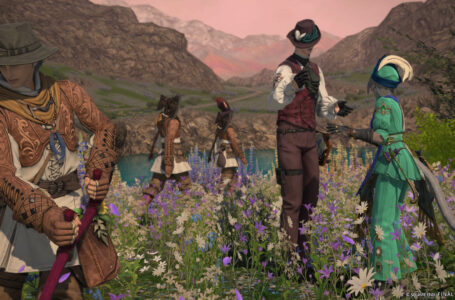RPG Roots: Beginning a grand adventure in Ultima I – The First Age of Darkness
I, like doubtless many of you reading this, love a good RPG. Specifically, I love a good Asian-style RPG: narrative-heavy, abstract mechanics, strong emphasis on interesting anime-style characters. However, as I’ve gotten older, I’ve become more and more interested in the history of the genre — and particularly a time when we didn’t really make the distinction between “JRPG” and “WRPG” that we do today. In fact, we can trace all kinds of RPGs back to some common origin points, one of which is Richard Garriott’s famous Ultima — or, to give it its full title, Ultima I: The First Age of Darkness.
Ultima, as we shall refer to it hereafter, was first released in 1981 for the Apple II home computer. It was originally published by California Pacific Computer Company, but the series as a whole has had numerous publishers over the years, including Sierra On-Line, Garriott’s own Origin Systems outfit and, later, Electronic Arts.
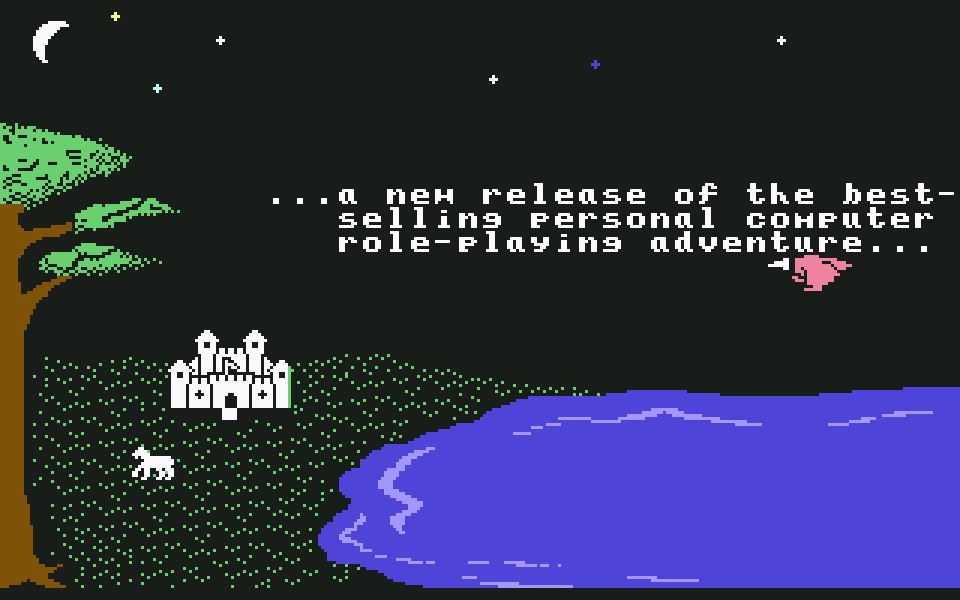
The original release of Ultima for the Apple II was written in BASIC, the built-in programming language that came included with most late ’70s and early ’80s home computers. BASIC has the advantage of being easy to learn — the “B” stands for “Beginner’s” — but the significant drawback of being quite slow. Perhaps not a huge issue for a fundamentally turn-based game like Ultima, but as technology improved and games became more advanced, players started demanding a bit better than the limitations of such a language offered.
So it was that in 1986, after three sequels on a wide variety of platforms, Ultima got a full remake written in the high speed assembly language to bring it roughly in line with its follow-ups — if not in terms of mechanical complexity, then at least in terms of polish and presentation. This is the most readily accessible version available today — and while it is antiquated in many respects, it’s very much worth checking out if you’re interested in the history of the RPG genre, since many subsequent RPG makers in both western and eastern territories have specifically cited the Ultima series as a key influence on their work.
Before we delve into the game itself, it’s worth noting that Ultima is a game where you’ll want to read the manual. Not because it’s particularly helpful — outside of the keyboard commands you use to navigate the game and perform various actions, it deliberately keeps a lot of things about the game rather mysterious — but because that’s your primary source of information about the world of Sosaria that the game is set in. Since the game was originally designed for home computers with very limited amounts of memory, the amount of text and graphics in the game is relatively minimal by modern standards — so don’t expect any sort of cinematic storytelling in this.
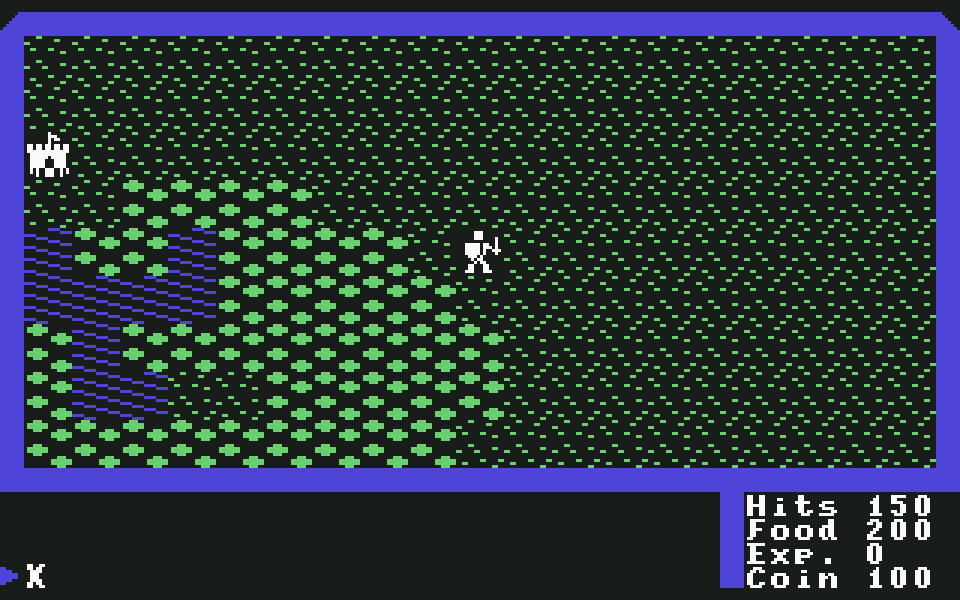
Indeed, after creating a character in Ultima, you’re dumped right into the world without even an introduction sequence and simply invited to get on with it. Without the manual by your side, you might not even know that your ultimate quest is to defeat Mondain the wizard, and that in order to do that you will need to do something about the Gem of Immortality he holds — a gem which, unsurprisingly, confers the benefit of immortality on our boi.
In some respects, it doesn’t really matter, though, because not only is Ultima an early example of a role-playing game on home computers, it’s also one of the first examples of an open-world sandbox game. Within the framework of the game’s mechanics, you can do whatever you want in Ultima. And there is actually quite a bit to do — much of it completely optional.
Ultima is split into several main components. Initially, you’ll find yourself on the overworld map which, like early Final Fantasy and Dragon Quest games, is presented at such a scale that you can cover long distances in very little time. While you wander around on the map, you’ll be constantly consuming your food supplies — running out of food means instant death just the same as running out of hit points, so you’d better make sure you always have plenty of provisions for your journey.
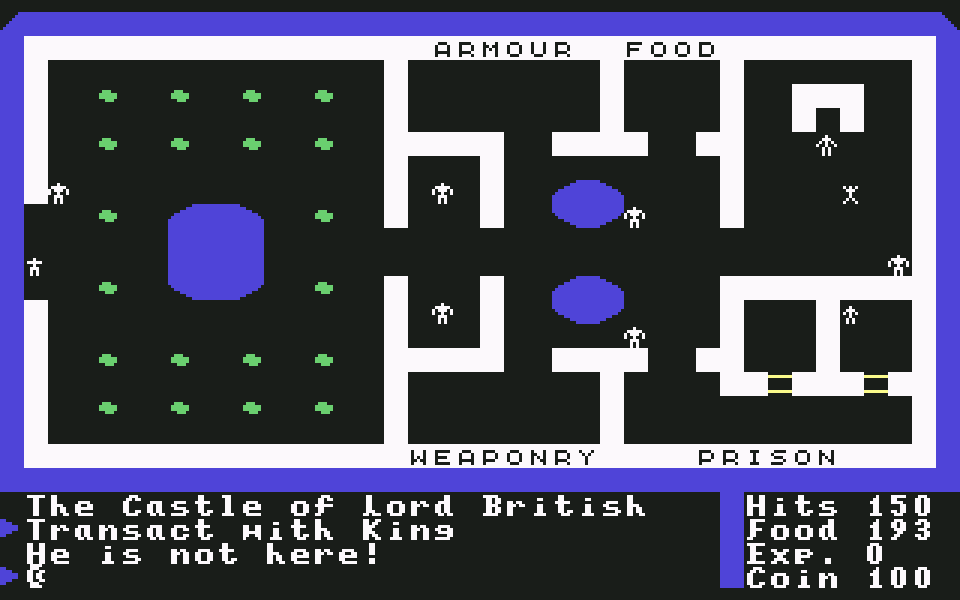
On the map, you’ll encounter monsters which will follow you around and attempt to inflict various forms of bodily harm on you. Combat is a simple case of pressing the Attack key (A by default, or the fire button on the joystick if you’re playing on a platform that uses joystick such as Commodore 64) and then indicating a direction — you’ll then take a swing at the enemy and they’ll take a swing right back. You then repeat this process until one of you falls over or runs away.
You do have a few additional options. Pretty much every character class can cast spells to varying degrees, though only characters specifically created as a wizard have access to the higher-level, more dangerous spells. Regardless of class, though, spells are handled as if they are consumable items — you need to purchase them from towns, take a turn to “ready” them, then cast them.
It’s worth noting that unlike in many other RPGs, there are no healing spells on offer — Ultima has a rather peculiar approach to healing that we’ll talk about in a moment. Rather, the spells range from simple projectiles (Magic Missile, in true D&D tradition) to the ability to summon ladders to the next or previous floor while in a dungeon.
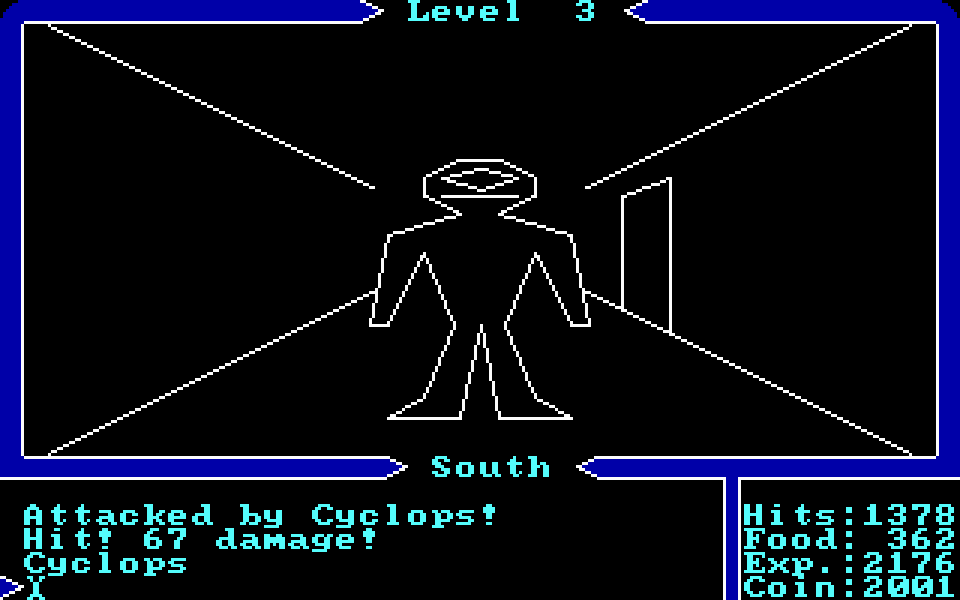
Ah yes, dungeons. A key part of your progression in Ultima comes from dungeons, which are scattered around the landscape and randomly generated with each new playthrough. When you enter a dungeon, you’re thrown into a simple first-person perspective display and able to move around via “step” and 90-degree turns, much like in other classic dungeon crawlers such as the equally influential Wizardry.
As you explore, you’ll encounter various monsters, who once again can be battled with a simple tap of the Attack key or fire button — or hit with a spell if you have the appropriate components. Killing monsters rewards you with experience points and money in the same way as beating foes on the overworld does — monsters come a lot more thick and fast in dungeons, though, so they’re a much more reliable, quicker means of attaining both things.
Probably the most crucial thing about dungeons, though, is the fact that if you successfully make it back up to the surface after a subterranean killing spree, you gain hit points that roughly relate to the experience you gained in the dungeon. You have no maximum HP value in Ultima, so by repeatedly crawling dungeons and heading back to the surface, you can inflate your health value to astronomical levels — and indeed doing so is vital to your long-term success. This is one of only two ways to heal yourself and gain HP in Ultima; the other is to donate money to the local Kings.
Each dungeon level sees an increase in the power level of monsters, and every two dungeon levels the lineup of monsters changes. As such, there’s plenty of variety — and the game is designed in such a way that it’s better to just sort of dip your head in a bit at a time rather than attempting to “clear” a dungeon in one go. Indeed, getting reckless too early in the game will result in a swift defeat!
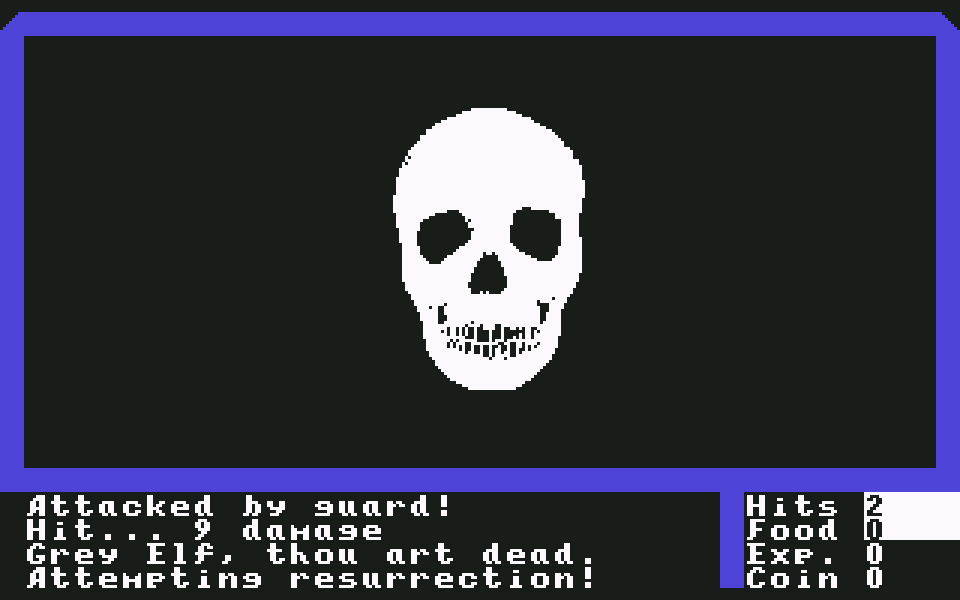
Death in Ultima is a drawback, but not the end of your game. Upon either starving to death or being splattered across the nearest flat surface by a monster, you’ll be resurrected at a random location relatively near to where you died with just 99 HP and 99 packets of food. All your money will be gone and you’ll have lost your weapon — and if you were travelling in a vehicle at the time you died, your vehicle will have been destroyed also. You will, however, have kept any armour that you were carrying or wearing — though the latter will have become unequipped in the resurrection process — along with your accumulated experience and bonuses to stats.
Stat bonuses can be acquired in two main ways: firstly, by completing quests for the Kings of the various lands around the world, and secondly, by locating landmarks. These two objectives are quite compatible with one another, since the Kings will often task you with tracking down a specific landmark, meaning that you can visit the landmark to acquire its stat bonus, then head back to the King to receive a stat bonus as a reward for completing their quest.
Both the landmark and quest stat bonuses can be acquired repeatedly right up until you max their respective stats out at 99, so if you want to be sure you’re ready to take on absolutely everything Ultima has to offer, heading out into the world and “training” like this is an essential part of the overall game structure. There are a few limitations, though, most notably that the Kings’ stat bonuses gradually get smaller as your stats rise, and that you can’t acquire the same landmark’s stat bonus twice in succession — you’ll need to pay another landmark a visit first.
If all this sounds extremely abstract and weird, you’d be absolutely right — but the freeform nature of Ultima’s gameplay proves to be surprisingly compelling, plus there are plenty of surprises to discover along the way, too. After you’ve taken a total of three thousand actions in the game — including moving — various additional items will become available in the shops, including new means of transportation and weaponry. And many of these items are oddly futuristic in nature.
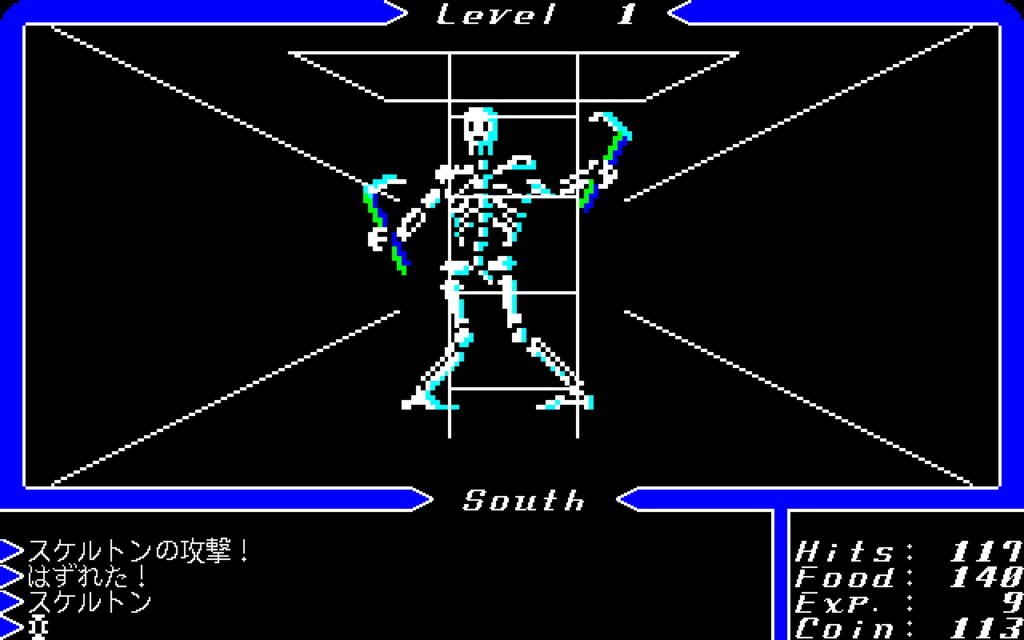
For example, by far the best weapon in the game is the Blaster, which is a ranged laser gun that can obliterate most foes before they even get near you — especially useful on the world map. Vacuum suits and reflect suits protect you from the elements as well as enemy attacks. Flying cars allow you to travel anywhere in the world except forests. And a space shuttle… well, it allows you to go to space.
Yes, if you thought a weird combination of fantasy and sci-fi was exclusive to later Final Fantasy games, you can just think again, because Ultima was doing this nonsense right from the outset. Indeed, in order to complete the game you’ll need to blast off into space and engage in some simple ’80s style space combat in order to… I don’t know, prove your worth or something, then head back down to Sosaria, find yourself a time machine and use it to deal with Mondain once and for all.
In later years, creator Richard Garriott looked back on the development of Ultima and explained the presence of aspects such as the space combat sequence as being his attempt to fill the disk with things he thought were cool. Initially, there wasn’t any real grand design to make this a coherent, beautifully crafted narrative universe — but that most certainly did happen as time went on. And it all started here.
Ultima I: The First Age of Darkness is a weird game and I wouldn’t fault anyone for bouncing off it for being so peculiar, obtuse and, at times, unforgiving. But, returning to it in 2022 with the eyes of someone who has played a lot of RPGs over the years, I can’t help but like its admirable expression of unbridled creativity. While one can see the elements that later RPGs would pull from this first Ultima game clearly, it’s just as interesting to look at the aspects the genre as a whole chose to leave behind in the long term. Because those are the things that make this game really stand out.
Ultima’s MS-DOS version is available for less than a fiver from GOG.com. Versions are available for pretty much any ’80s platform you can think of. Thanks to MobyGames for the screenshots.
Join The Discussion
Rice Digital Discord
Rice Digital Twitter
Rice Digital Facebook
Or write us a letter for the Rice Digital Friday Letters Page by clicking here!
Disclosure: Some links in this article may be affiliate links, which means we may earn a small commission if you make a purchase after clicking on them. This is at no additional cost to you and helps support Rice Digital!
- Letter from the Editor: passing the torch - June 30, 2023
- Super Woden GP 2 is looking promising - June 30, 2023
- Inti Creates is making a 32 bit-style Love Live action platformer - June 26, 2023






